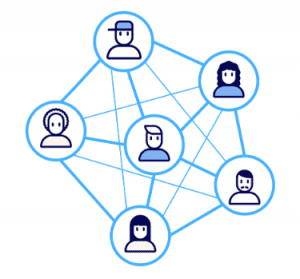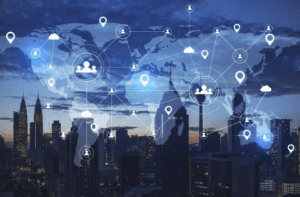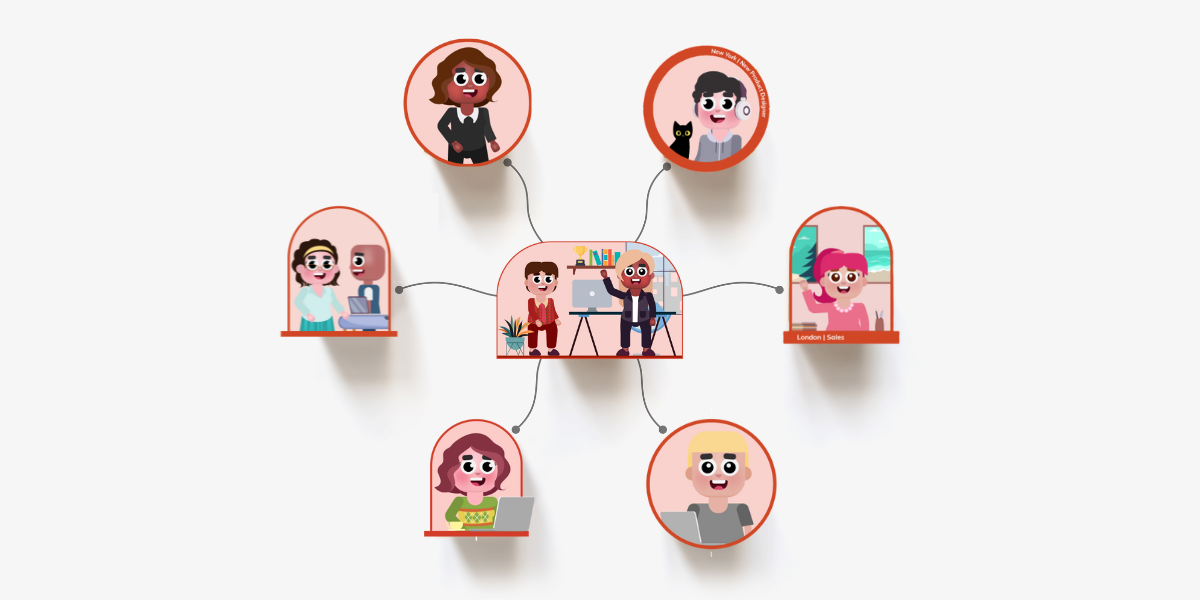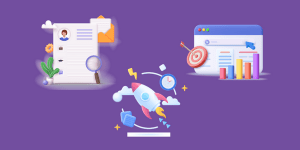In today’s rapidly evolving business landscape, effective collaboration, open communication, and strategic networking have become essential drivers of organizational success. Nowhere is this more evident than in the growing trend of virtual coffee meetings—informal, digital touchpoints designed to foster connection and camaraderie in remote and hybrid work environments. Yet, behind the seemingly casual chatter and shared laughter lies a goldmine of insights about your organization’s people dynamics. By leveraging people analytics in these virtual interactions, organizations can gain a deeper understanding of their team dynamics, enhance employee engagement, and drive superior business outcomes. This article explores the vital link between virtual coffee meetings and people analytics, focusing on how this combination can support organizational development, improve change management, and ultimately lead to a more resilient, agile, and successful organization.
Leveraging people analytics to make virtual coffee meetings more effective can be a significant catalyst for better employee engagement, superior business outcomes, and particularly for fostering a positive environment for organizational development and change management. In the landscape of remote and hybrid work, virtual coffee meetings are not just casual interactions, but rather critical platforms for maintaining and strengthening connections among team members.
People analytics, when used efficiently, provides insights into employees’ communication patterns, preferences, and feedback, helping to optimize these virtual interactions for maximum engagement. As part of a broader change management strategy, these insights can guide the development of tailored engagement strategies that consider the individual and collective needs of employees.
Improved engagement at these levels fosters a culture of inclusivity and open dialogue, key to navigating organizational change. As individuals feel more connected and valued, they are more likely to participate in, support, and adapt to changes. Moreover, such a data-driven approach allows for continuous learning and adaptation, making change management a more agile and responsive process.
Ultimately, people analytics transforms virtual coffee meetings into strategic opportunities for cultivating a resilient, agile organization. It paves the way for the smoother execution of change initiatives, promotes a stronger sense of belonging among employees, and drives better business outcomes. Following this, we’ll dive deeper into understanding people analytics, Organizational Network Analysis (ONA), and how LEAD’s solutions support these to enhance your organization’s dynamics and success.
What is People Analytics?
Technology plays an important role in every aspect of human resource management and people operations today and even more so in recent developments with hybrid and remote modes of working. Technology also generates data points that are useful in decision-making. But in order to process the data obtained from technology into information, a people analytics strategy is required.
People analytics is the practice of using datasets from HR to generate insights that give real-time value to the effectiveness and efficiency of an organization’s workforce. Data from people processes like performance management and talent systems are useful sources. People analytics is a method that aims to improve business decisions and critical outcomes with regard to employees and customers through the collection and application of talent data. The data enables HR departments and leaders to arrive at evidence-based conclusions that are instrumental in the improvement of workforce planning and processes, performance, employee lifecycle and experience.
What is Organizational Network Analysis (ONA)?

In every organization, there is a go-to team composed of individuals who are knowledgeable about the various operations of the business. They rely on one person to answer any questions that arise or point them in the direction of getting useful answers. These connections are vital to an organization’s success. ONA is a process that visualizes how information flows through an organization. It involves connecting various nodes and ties in an organization, which allows HR to understand how information is flowing within the organization.
ONA is an approach for tracking, mapping and analyzing the patterns of collaboration, relationships, workflow, information and expertise sharing, among interacting individuals, across organizations. The data is obtained from quantitative methods such as surveys and can be analyzed using specific software and algorithm to provide ONA practitioners with an understanding of the effects of relationships on employee effectiveness and productivity. Through ONA, you can develop a strategy that will help maximize the exchange of information within an organization. It will allow you to identify areas where information can be gained and utilized to improve the efficiency of your business outcomes.
Why are People analytics and ONA Important for Organizations/HR?
There is no doubt that people analytics and ONA are important for organizations and HR. After all, they help organizations to better understand their employees and make better decisions about how to manage them. Organizational network analysis (ONA) and people analytics are two tools that are rapidly gaining popularity in the business world because they help organizations to understand the relationships between people and how those relationships can impact the organization as a whole. However, some people may still be wondering why these tools are so important. In this article, we will discuss some of the key benefits of people analytics and ONA.
Also, ONA provides ways to understand the complexities of human behavior and make better decisions about how to manage and improve organizational performance, through a graphical representation of an organization’s network, which can be used to identify influential people and key relationships.
People analytics, on the other hand, uses data to identify patterns and trends in employee behavior. This information can be used to improve organizational performance, identify potential risks, and make better decisions about hiring and retention.
ONA has a variety of useful applications in talent management and in many cases, is seen as a sub-discipline of people analytics. While people analytics is achieved using ONA, as the data obtained from ONA helps business leaders, POPS and HR obtain data and measurable metrics to answer important questions proactively and ensure key talents are engaged and recognized for their contributions. Companies use ONA to identify areas where silos exist, as a result of exclusionary tendencies that can illuminate bias and discrimination. In the case of new employees or external job candidates, ONA can be used to analyze networking skills and breadth of connections to other employees and business units, which are key indicators of career success or failure in the first year. ONA can also be applied to internal candidates and employees suitable for promotions and other job openings.
Every organization has people who are responsible for connecting ideas and information. Deloitte provides a number of important network roles that organizations use ONA to identify as follows;
 • Central node: These are the people who seem to know or be known by everyone. They are most critical for organizational performance because they are high-performing, highly engaged in company news and developments and are able to share a lot of information and influence team members. Central nodes can be found anywhere in the hierarchy of an organization, are often well-liked, and are also the most susceptible to overload and burnout.
• Central node: These are the people who seem to know or be known by everyone. They are most critical for organizational performance because they are high-performing, highly engaged in company news and developments and are able to share a lot of information and influence team members. Central nodes can be found anywhere in the hierarchy of an organization, are often well-liked, and are also the most susceptible to overload and burnout.
• Knowledge brokers: These are the people who act as bridges between groups. They share information and ideas that generate a sense of purpose, in line with achieving organizational goals and objectives.
• Peripheral: This group is often referred to as the white spaces because they are easily overlooked and are typically unconnected to the rest of the organization. They can form a high risk to organizations because they don’t communicate with others and can be easily convinced to take their talents to other employers.
• Ties: Ties, as the name implies, connect the formal and informal relationships between nodes. Optimal relational ties formed between central nodes and knowledge brokers can help with the easy movement of useful information between and within hybrid and remote teams.
What are the Benefits of Harnessing People analytics and ONA?
Does utilizing people analytics and ONA benefit the hybrid/remote work model?
Organizations today are under constant pressure to do more with less, there is a need to increase efficiency and effectiveness while reducing costs. To meet these challenges, many organizations are turning to data and metrics as the future of work. One area that has seen a lot of growth in recent years is ONA. This involves the use of online tools and platforms to connect people and facilitate communication and can also be used for a variety of purposes, including networking, collaboration, and knowledge sharing. ONA is a relatively new field that has arisen from the need to better understand the complexities of modern organizations. ONA relies on graph theory to map out the relationships between individuals within an organization and to identify the key influencers and decision-makers within that organization.
Another area that has seen growth in recent years is people analytics. People analytics combines people’s data and analytics to improve our understanding of people and how they interact with organizations. When used correctly, people analytics can help organizations make better decisions about their workforce. People analytics is the application of ONA to human resources in order to better understand the workforce and to make more informed decisions about hiring, firing, and promoting employees. People analytics has been shown to improve employee experience, employee well-being, and retention rates, identify high-potential employees, and improve team performance.
There are many benefits to harnessing people analytics and ONA within organizations. A combination of ONA and people analytics provides a holistic view of the intricacies involved in company operations. Through a better understanding of the relationships between employees, HR and POPS leaders can make more informed decisions about how to best utilize the workforce. Additionally, people analytics can help organizations identify potential problems before they arise, thereby saving costs on employee retention and newcomer integration and onboarding practices.
 Also, there is growing evidence that organizations that utilize people analytics and ONA are better able to thrive in a hybrid or remote work model. Adequate use of the data obtained from these tools can be used to set up systems that encourage and improve communication and collaboration between hybrid or remote team members. Utilizing these practices can help organizations to better understand their employees and identify areas of improvement. Additionally, it can help to create a more open and transparent work environment, which is essential for remote and hybrid work models.
Also, there is growing evidence that organizations that utilize people analytics and ONA are better able to thrive in a hybrid or remote work model. Adequate use of the data obtained from these tools can be used to set up systems that encourage and improve communication and collaboration between hybrid or remote team members. Utilizing these practices can help organizations to better understand their employees and identify areas of improvement. Additionally, it can help to create a more open and transparent work environment, which is essential for remote and hybrid work models.
Some key reasons to answer the question of why ONA and people analytics is important for organizations to include;
• Help organizations to better understand their employees.
• They can be used to improve organizational performance.
• They help organizations to make better decisions on human capital and talent management.
• Can reduce employee turnover.
• Promote diversity and inclusion.
• Drive employee performance.
• Assess the company onboarding process.
• Uncover recruiting best practices.
• Plan for the future of HR functions.
• Can help with digital transformations and the adoption of new technologies for the organization.
Thus, it is clear that utilizing people analytics and ONA can benefit the hybrid/remote work model. By using these tools, organizations can improve the way they support and communicate with their employees, and create a more efficient and effective work environment for their employees, which in turn leads to a more productive and satisfied workforce.
How to Practice People Analytics and ONA in the Workplace?
Organizations are increasingly recognizing the need for data-driven decisions when it comes to their people. People analytics and organizational network analysis (ONA) are two tools that can help organizations achieve better understanding, make more informed decisions about talent and improve people-related initiatives in the workplace. People analytics is the use of data to understand and predict people-related outcomes. ONA, on the other hand, is the study of an organization’s internal social network. Both people analytics and ONA can provide insights into things like the impact of company culture on employee engagement, retention, and job satisfaction, or understand the relationship between diversity and profitability.
If you’re interested in using people analytics and ONA in your organization, there are a few things you should keep in mind.
• People analytics and ONA are most effective when used together.
• You need to have good data to work with and interpret accurately.
• HR and POPS teams need to be able to effectively communicate the goals and vision of the organization with key talent.
While there is no single correct model for using people analytics and ONA, the adoption process should follow a number of steps that include adequate planning and execution, in order to ensure impact, success and continued growth of organizational teams.
• Plan: Identify adequate sources of data that include a combination of internal sources and HR systems that are linked with active methods such as surveys and passive methods such as social media via Slack on Microsoft Teams or LinkedIn and other collaboration platforms. Develop the objectives for analysis and design questions to be answered by the process.
• Define critical success factors: This can include establishing leadership and support chains to assign ownership of the analytics effort. As well as defining the measures through which project success can be measured. These might include; on-time delivery, project impact and user feedback.
• Audit data: Identify and grade the quality of the available data, in order to find gaps where present. The use of accurate data is important for this analytical practice and concrete steps must be taken to clean and maintain data accurately across the HR, POPS and external data stores.
• Analyze data: Adequate training for HR and other business functions is required to implement tools for analysis of the data collected in line with the requirements of the stakeholders, HR business partners and the organization.
• Evaluate the process: Develop an investment roadmap to review the process, and business function, evaluate the impact and continuously update the process as required.
How does LEAD’s Solution Support People Analytics and Work on ONA?
Organizational networks are hidden sources of strategic success gained as a result of network analysis, through which HR and POPS leaders can often gain a deep understanding of operations and make key decisions based on patterns of collaborations and influence that are not revealed by formal hierarchical structures. In network analysis, however, unique collaboration silos are identified across functions, distances, capabilities, and other organizational dimensions that hinder scale efficiency or impede innovation. ONA has the capability of identifying peripheral network members whose contributions go unnoticed. Therefore, the focus of the analysis carried out by LEAD.bot is to encourage small groups of pivotal relationships that target interventions that are proven to make useful interventions. Because of this, ONA-driven strategies tend to require fewer resources as compared to non-ONA-driven strategies.
LEAD.bot provides people analytics through organizational network analysis (ONA) and pulse surveys for optimal people operations from the ability to answer pertinent questions including;
• How do information and communication flow in the organization?
• How are teams and individuals collaborating with each other?
• Can we identify the most influential employees or teams and quantify their comparative impact?
• Who has been the most affected due to the pandemic/remote/hybrid work?
• Are there signs of burnout?
• Are some employees at a higher risk of exit?
• Can we help employees be more productive?
Answering the aforementioned questions are important to accentuate the unique qualities of organizations, which is an important aim of LEAD to ensure the following:
1. Personalize Matching Support for Employees. LEAD helps your workforce build trust and friendships. Through easy-to-launch virtual or in-person outings that are built on diversity, equity and inclusion. Peer-to-peer learning opportunities are encouraged to promote internal networks for new hires and existing employees.
2. Retain Exceptional Talent. Understanding employees and complex contributions. To give adequate recognition to the people doing the work, especially the underdog. LEAD provides solutions to promote organizational networks that ensure key talents are recognized for their complex contributions, to keep them engaged and productive.
3. Obtain Unique Data Insights. LEAD provides unique data insights with AI technology that visualizes the employee collaboration network, to inform strategic interventions aimed at enhancing employee integration and collaborations.
4. Put Your People First. Build a culture that understands the value of employees. LEAD’s custom AI focuses on the experiences and well-being of employees and identifies signs of burnout and disengagement, to ensure People Operations is up to date on employee performance.
5. Practice Effective Listening. Gain first-hand knowledge of what employees need to stay engaged. Using LEAD’s people analytics features to drive employee retention
6. Understand Employee Connections Through ONA. LEAD provides data to reveal employees’ potential and habits through connectedness and intra-workforce relationships. By identifying network members whose contributions go unrecognized, pivotal relationships and collaborations can be developed through peer and inclusion programs to scale efficiency and productivity.
You can also use LEAD.bot’s pulse survey to ask employees questions below, directly in in Slack or Microsoft Teams: (survey samples!)
- Who do you collaborate with regularly in your role?
- Who do you seek advice from when you face challenges at work?
- Who would you go to for expertise or information about job-related matters?
- Who do you communicate with daily?
- Who are the people you’re connected with for decision-making processes?
- Who do you usually socialize with during breaks or after work hours?
- Who do you exchange innovative or creative ideas with?
- Who gives you feedback on your work?
- Which colleagues are essential for you to complete your work effectively?
- Who do you coordinate most with for interdepartmental projects?
- Who do you mentor or who mentors you within the organization?
- If you had a problem at work, who would you turn to for support?
Remember, the objective is to map relationships and interactions, so try to make your questions as specific and as relevant to your organization as possible. Also, make sure your employees understand the purpose and how the information will be used to respect privacy and foster trust.You can also work with the LEAD team to develop questions and nudges for your organization specifically.
LEAD, with its sophisticated Organizational Network Analysis approach, capitalizes on the power of AI to offer an in-depth and refined understanding of the intricate dynamics within organizations. By using machine learning algorithms for predictive analytics, LEAD can identify patterns in historical data, anticipate future network behaviors, and highlight potential communication bottlenecks and issues before they arise. Furthermore, the platform excels in providing real-time analytics, significantly speeding up the traditionally slow ONA process and enabling quicker, more agile decision-making.
LEAD’s AI also personalizes its analysis to reflect the unique behaviors and needs of various individuals or departments within an organization. This personalized approach ensures that the platform’s strategies for improving communication and collaboration are effective and tailored to the organization’s specific needs. Additionally, the platform’s AI can detect anomalies in the organizational network, potentially signaling conflicts, information silos, or other issues that can then be proactively addressed.
Final Thoughts
In the ever-evolving work environment characterized by hybrid and remote operations, organizations that place a premium on data-driven decision-making, trust, and transparency find immense value in ONA and people analytics tools like LEAD. Conveniently integrated right into widely-used collaboration platforms such as Slack and Microsoft Teams, LEAD provides seamless, powerful analytics that enhance an organization’s competitive advantage.
Business leaders are urged to tap into the collective wisdom of their teams and leverage people-focused data to generate actionable insights. LEAD’s (Artificial Intelligence) AI-powered ONA enables identification of potential barriers between teams and groups, aiding in the strategic connection of the right individuals to foster beneficial outcomes. The goal extends beyond simply increasing the organization’s agility. It also aims to create a more interconnected, efficient, and harmonious work environment.
By bridging AI and Organizational Network Analysis, and making it readily accessible within tools teams already use daily, LEAD emerges as an innovative, efficient, and compelling solution for organizations striving to navigate and excel in the complex landscape of modern business.
Read more about What is People Analytics and What Does LEAD Offer? here.









